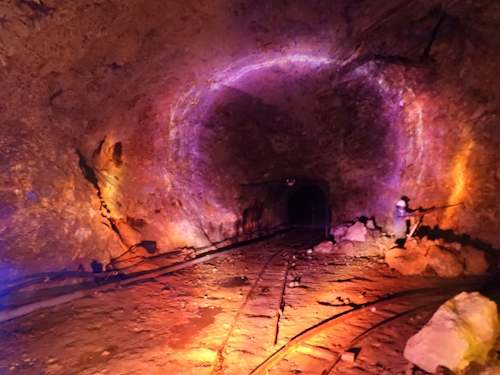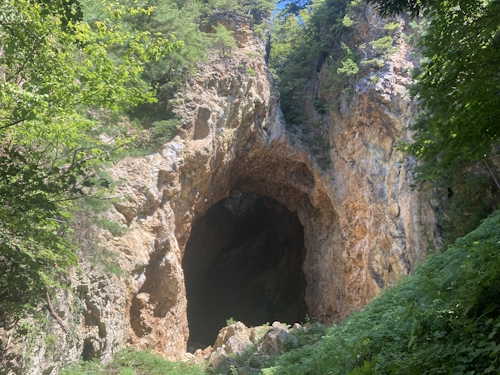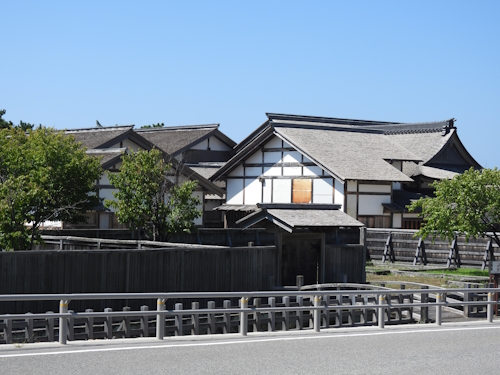Blog WHS Visits
WHS #925: Sado Gold Mines
One of the things I like most about visiting WHS is that it opens up lesser-known regions even when the WHS itself isn’t too great. This is certainly the case for Sado Island, a lovely example of a slowish, rural Japan. Sado's size is fairly large, it even is the second largest island (after Okinawa) outside of the four main islands of Japan. Its other major tourist attraction in addition to the WH-listed Gold Mines is the Toki (Crested Ibis), which has been reintroduced here after it had become extinct in Japan.
I started my visit at the two mines of Sado Kinzan: Sohdayu (400 years old) and Dohyu (100 years old). The combined entrance fee is 1500 yen (9 EUR). You’re not forced on a guided tour here as is so common at other WH mines, dragging yourself behind a guide elaborating in Polish or Spanish. You just walk through the tunnels and see the exhibits at your own pace. The information is displayed in both Japanese and English. The OUV of the Sado mines lies in its Edo-period way of mining, but – as with Rosia Montana which is recognized for its Roman way of mining - it is hard to ‘unsee’ the alterations and additions later mining generations made at the same spot. I also did not notice anything particularly Japanese about the methods used, although, at the end of the tour of the Sohdayu mine, a display shows that Shinto rituals were performed to celebrate the discovery of a new vein or to pray for the ore to become softer.
The iconic image of the Sado mines shows the Dohyu mountain split almost in two halves (see main site photo). This 30m wide crack already started to appear during the Edo period when they started open-cast mining from the top and went in deeper and deeper. As part of the exterior visiting route of the Dohyu mine, you can walk up to where the crack is (see photo below).
As part of the inscription of the Sado Gold Mines, Japan agreed to acknowledge the fate of the Korean labourers who were sent to work here during the Second World War. I didn’t see any of this displayed at the two mines that I visited, but if it is there it would be more appropriate to the mines from the Meiji era (such as the Kitazawa Flotation Plant, which lies a bit further downhill). A separate section at the Aikawa History Museum was also promised.
What is acknowledged in the presentation of the Edo-era mines is the fate of the “unregistered” or “homeless” people who were sent to work here from 1789 onward. These were Japanese men down on their luck that were rounded off the streets of big cities such as Edo, Osaka and Nagasaki to do hard labour as drainage workers for 10 years in the mines on Sado Island. There’s also a memorial shrine to them along the road just south of the main mines.
From Sado Kinzan, I walked down for 30 minutes to the town of Aikawa. This is a pleasant hike, with views of the bits and pieces of mining history scattered in the surrounding landscape. A major stop is the Sado Bugyosho: a reconstruction of the former Magistrate's Office (photo 3). The importance of the Edo-period Sado mines is partly derived from the many administrative records that have survived about its production and management. The Office comprises a vast complex, surrounded by a moat as all the precious gold was kept inside. At the exhibition in the Sohdayu mine, you can see a model of how it worked at the time, with offices, a mint and a smelting plant. Exhibits at the main office building are very sparse at the moment, or so understated that you must be Japanese to understand them. There is a bare room for example with only a sign ‘Oshirasu’ – later when I googled it, I saw that it means “Court of Law during the Edo period, in which the parties sat on white sand“. The second building that is open to the public has exhibits on the smelting process that was executed here.
Getting there on public transport
Although it’s not far from Tokyo, it’s a costly detour. A single train journey on the shinkansen from Tokyo to Niigata (2h) costs 68 EUR and the return jetfoil ticket to Sado Island from Niigata (1h) is over 80 EUR. Practically, you'd need to stay at least one night in Niigata. From Ryotsu port on Sado, bus #1 leaves about once an hour for the town of Aikawa. The schedule (which may change monthly) and routes can be found here. Some of those buses, including the 9.15 one that corresponds with the arrival of the 7.55 jetfoil from Niigata, continue directly to the Sado Gold Mines. Tickets can be purchased on the bus, using the old-school Japanese system paying the fare corresponding to a display above the driver, or you can get a one-day pass (1500 yen/9 EUR) at the Tourist Information Center at Ryotsu port. Catching the first jetfoil out and the last one back plus the bus inland, you will have about 5 hours in and around Aikawa and the Gold Mines, which is more than enough.
Els - 15 September 2024


